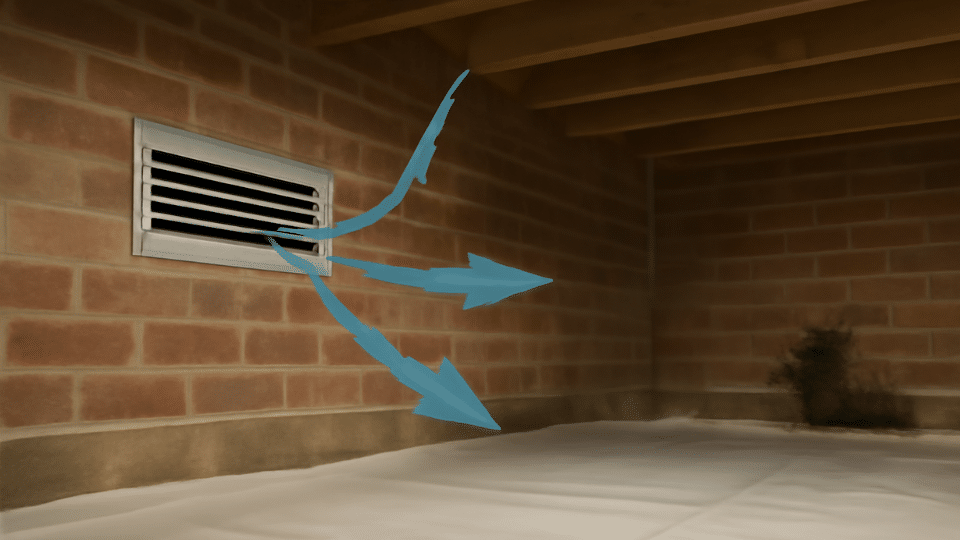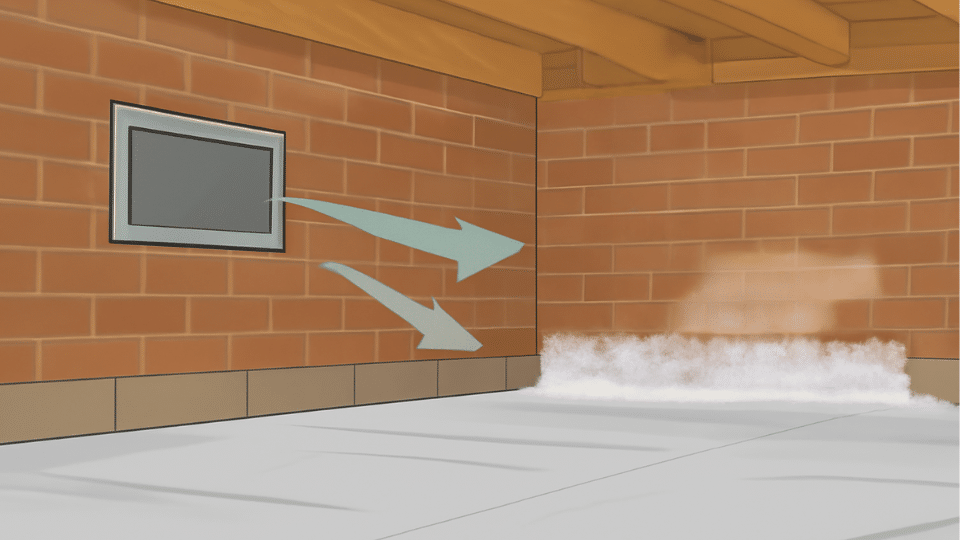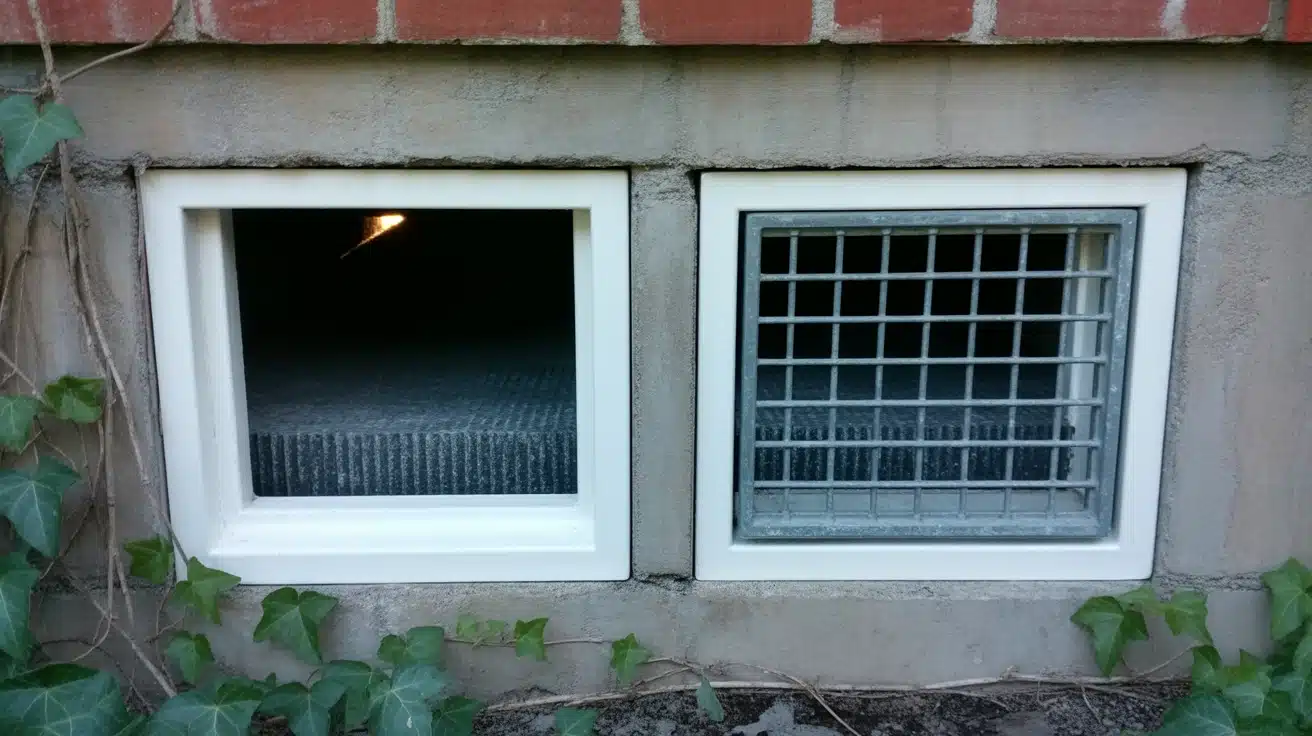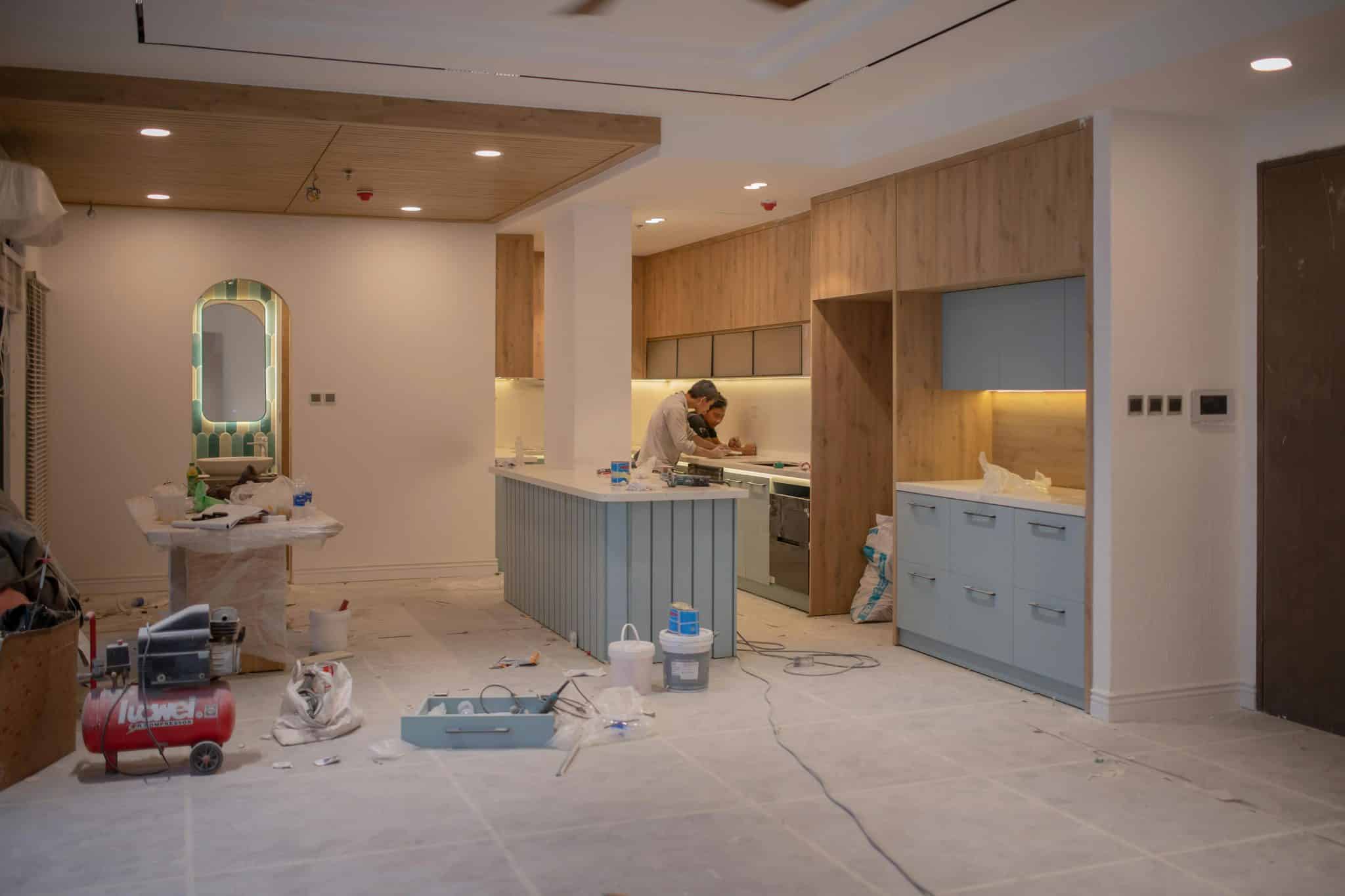Do your crawl space vents leave you scratching your head? You’re not alone. Most homeowners face the same confusing question: Should these foundation openings stay open or closed?
The wrong choice costs you money. Open vents in winter send heating bills through the roof. Closed vents in summer create a moisture nightmare that breeds mold and damages your foundation.
Here’s the truth: there’s no one-size-fits-all answer. Your climate, season, and your home’s specific needs determine the best approach.
This guide cuts through the confusion with clear, practical advice. You’ll learn when to open vents and when to seal them tightly, plus how to make decisions that protect your home and wallet.
By the end, you’ll have a simple system for managing your crawl space vents.
Ready to take control?
What are Crawl Space Vents?
Crawl space vents are small openings built into the foundation walls of your home. They allow air to flow in and out of the crawl space beneath your house.
These vents serve three primary purposes: they help fresh air circulate through the space, regulate humidity levels, and influence your home’s heating and cooling costs.
Think of them as your home’s breathing system for the area under your floors. When working correctly, crawl space vents prevent stale air from getting trapped and help maintain the right balance of airflow throughout your home’s lower level.
Key Factors for Choosing Crawl Space Ventilation
- Climate and Local Weather Conditions: Hot, humid areas need open vents, while cold regions require closed vents. Summer heat calls for open vents to stop moisture buildup. Winter cold demands closed vents to prevent freezing. Coastal areas need more attention than desert climates.
- Moisture Control & Prevention: Proper ventilation prevents water vapor from accumulating in your crawl space. Excessive moisture leads to the growth of mold, mildew, and wood rot, which can damage foundations. Vapor barriers work in conjunction with vents to prevent ground moisture from entering.
- Energy Efficiency: Open vents in winter allow cold air to enter, increasing heating costs. Closed vents in summer trap hot air, overworking the air conditioning. Innovative vent management maintains steady temperatures and cuts energy waste. A good ventilation strategy can save hundreds of dollars per year.
- Airflowand Ventilation Requirements: Cross-ventilation requires vents on opposite sides of the crawl space. Stagnant air creates moisture problems and poor home air quality. Automatic vents adjust automatically, while manual vents require seasonal adjustments. Proper airflow prevents condensation and maintains stable conditions.
Types of Crawl Space Vents
| Type of Crawl Space Vent | Description | Pros | Cons |
|---|---|---|---|
| Manual Vents | Vents that open or close based on manual settings. | Complete control; Easy to install. | Requires seasonal adjustments; Inconvenient. |
| Automatic Vents | Vents that open and close automatically in response to changes in temperature or humidity. | Convenient; Energy-efficient. | Higher cost; May need professional installation. |
| Louvered Vents | Vents with angled slats that allow airflow but block debris. | Protects from debris; Allows airflow. | Limits airflow compared to open vents. |
| Foundation Vents | Vents are built directly into concrete or block foundations. | Durable; Long-lasting. | Requires professional installation; Higher cost. |
When to Keep Crawl Space Vents Open?

1. In Humid or Warm Climates
Open vents work best in hot, humid areas where outside air helps remove trapped moisture from your crawl space. Fresh airflow prevents water vapor from collecting on surfaces where mold and mildew love to grow.
In warm regions, keeping vents open year-round maintains healthy air circulation and stops your crawl space from becoming a breeding ground for fungus.
2. For Proper Cross-Ventilation
Strategic placement of open vents creates airflow patterns that move stale air out while bringing fresh air in. This cross-ventilation system works like opening windows on opposite sides of a room.
Proper air movement requires at least one square foot of vent opening for every 150 square feet of crawl space area. This ratio ensures adequate air exchange to maintain a healthy environment.
3. To Meet Building Code Requirements
Most local building codes require specific ventilation standards for crawl spaces, typically mandating open vents for homes without vapor barriers. These regulations exist to prevent structural damage from moisture buildup.
The following code requirements protect your home value and ensure you pass inspections. Building officials often require open vents as the standard ventilation method for traditional crawl space construction.
When to Keep Crawl Space Vents Closed?

1. In Cold or Freezing Climates
Closed vents in freezing weather protect your home from arctic air that can burst pipes and drive up heating costs. When vents stay shut during cold spells, your crawl space maintains warmer temperatures that prevent water lines from freezing.
This simple step can save you from expensive pipe repairs and keep your heating system from working overtime to replace lost warm air.
2. With Encapsulation Systems
Homes with crawl space encapsulation use vapor barriers and sealed environments instead of ventilation. These systems rely on dehumidifiers and conditioned air from the house rather than outside air exchange.
Encapsulated crawl spaces perform better with closed vents because outside air can introduce moisture and temperature fluctuations that work against the controlled environment.
3. During Extreme Weather Events
Heavy storms, flooding, or severe weather conditions call for temporarily closing vents to protect your crawl space from water intrusion and debris. Closed vents prevent rain, snow, and wind-driven moisture from entering during severe weather.
After storms pass, you can reopen vents once conditions return to normal. This temporary closure protects your crawl space from damage while maintaining long-term ventilation benefits.
Open vs. Closed Crawl Space Vents: A Comparison
| Factor | Open Vents | Closed Vents |
|---|---|---|
| Climate Suitability | Ideal for warm and humid climates. | Ideal for cold and freezing climates. |
| Moisture Control | Effective for moisture management in summer. | Prevents moisture buildup in colder months. |
| Energy Efficiency | It may increase energy costs in winter. | Reduces energy loss and maintains a comfortable home temperature. |
| Airflow & Ventilation | Enhances ventilation and prevents mold. | Limits airflow and helps maintain temperature. |
| Risk of Foundation Issues | Reduces the risk of mold and mildew. | Prevents cold air and water damage. |
| Maintenance | Requires more frequent adjustments. | Requires less maintenance once sealed. |
| Cost | Lower upfront cost but higher long-term cost. | Higher initial cost but lower ongoing maintenance. |
Best Practices for Crawl Space Ventilation
- Using Vapor Barriers in Combination with Vents creates a comprehensive moisture control system that works more effectively than either method alone. Vapor barriers block ground moisture, while vents handle air circulation, providing a more effective solution than either method alone.
- Sealing and insulating vents properly during off-seasons prevents air leaks that waste energy, while quality insulation around vent openings stops heat loss that drives up utility bills.
- Innovative Ventilation Systems: Automatic smart vents adjust themselves based on temperature and humidity readings, eliminating guesswork and providing optimal ventilation without constant manual adjustments from homeowners.
- Regular Maintenance and Inspection: Check your crawl space vents every six months for debris, damage, or pest intrusion that can block proper airflow and reduce ventilation effectiveness.
- Proper Vent Sizing and Placement: Install the correct number of vents based on your crawl space size, with a minimum of one square foot of vent area for every 150 square feet of crawl space floor area.
Final Thoughts
Managing your crawl space vents doesn’t have to be complicated. The key is matching your approach to your climate and seasons.
Open vents work best in warm, humid weather to prevent moisture buildup and mold growth. Closed vents protect your home during cold months by stopping freezing air and reducing energy costs.
Remember these simple rules: hot and humid climates need open vents, cold climates need closed vents, and most homes benefit from seasonal adjustments. Check your vents twice a year when seasons change.
Poor crawl space ventilation can lead to expensive problems, including foundation damage, frozen pipes, and high energy bills. With the right strategy, you’ll protect your home and save money year-round.
What’s your next step? Check your crawl space vents today and make needed adjustments.
Frequently Asked Questions
Are Crawlspace Vents Supposed to Be Open or Closed?
It depends on your climate and season – open them in hot, humid weather and close them in cold, freezing conditions.
Should You Open Your Crawl Space Vents in the Summer?
Yes, open vents in summer help remove excess moisture and heat from your crawl space in most climates.
Are you Supposed to Cover Crawl Space Vents in Winter?
Yes, cover or close vents in winter to prevent cold air from entering and freezing your pipes.
Should I Circulate Air in My Crawl Space?
Yes, proper air circulation prevents moisture buildup, but the method depends on your climate and seasonal conditions.








